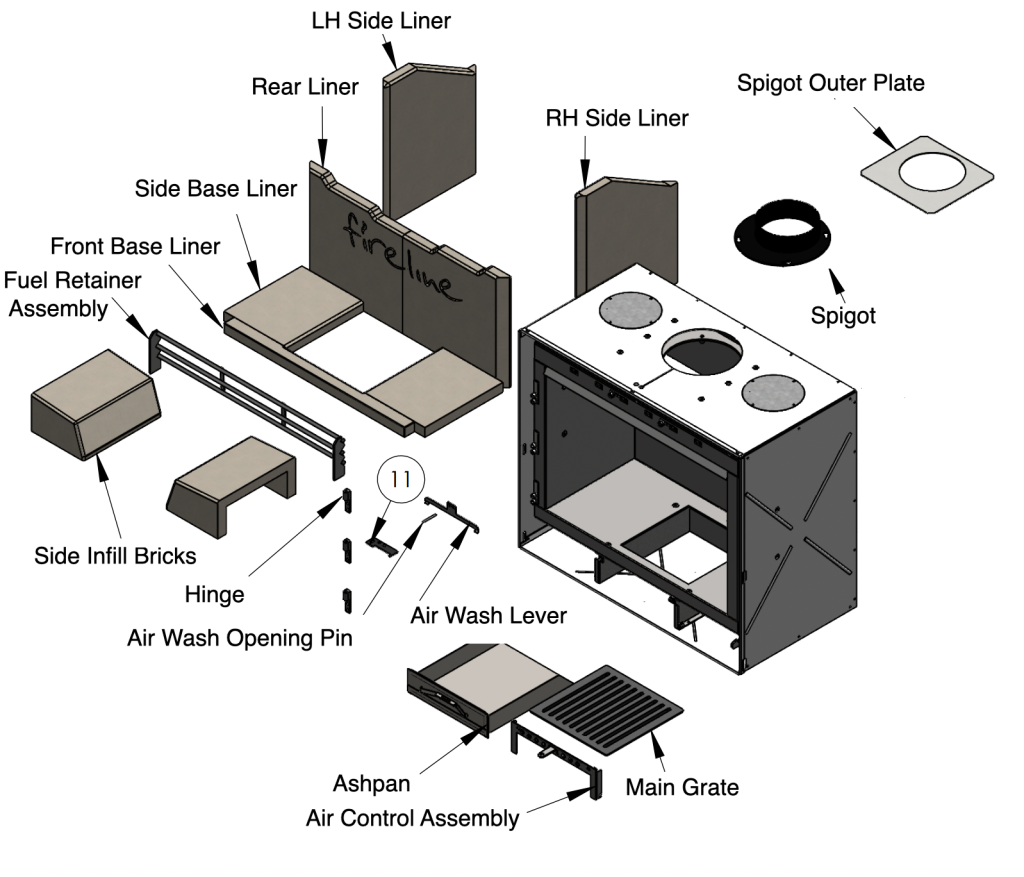Anatomy of Warmth: Exploring Wood Burning Stove Parts
A wood-burning stove areas diagram provides as a thorough manual to the internal processes of these conventional heating devices, supplying a detail by detail breakdown of each component. At the core of the plan may be the firebox, the main step where logs are burnt to make heat. The fireback, generally made from refractory substance, absorbs and shows temperature into the room. It’s a critical part that ensures efficient combustion and blows glowing warmth.
A crucial element highlighted in the wood-burning range parts diagram could be the baffle. Positioned over the fire, the baffle functions to redirect smoke and gases, promoting an even more complete burn and increasing power efficiency. Also, it helps to prevent heat loss up the chimney. Under the firebox, the ash container gathers ashes produced all through combustion, giving an easy suggests for removal and disposal.
Understanding the circulation makeup is essential for maximizing the performance of a wood-burning stove. The air consumption get a handle on, often portrayed in the diagram, enables people to control the amount of air entering the combustion chamber. Proper circulation administration is crucial for sustaining an efficient burn up and preventing the stove’s temperature. Furthermore, some wood-burning stoves have a damper, which further fine-tunes the get a handle on of airflow.
The diagram an average of involves the flue collar or stovepipe connection, where in actuality the stove is linked to the chimney. That portion guarantees the safe expulsion of combustion byproducts, such as for example smoke and gases, from the stove to the outside. The damper, located within the stovepipe, can be modified to control the draft and improve combustion.
The entranceway and home gasket are integrated parts highlighted in the wood-burning stove parts diagram. The door provides use of the firebox, facilitating running and cleaning, while the gasket ensures an airtight seal when the door is closed. Maintaining a proper seal is needed for controlling combustion and avoiding the escape of smoking and gases into the residing space.
Several modern wood-burning ovens function a secondary combustion program, and this really is frequently explained in the parts diagram. The extra air consumption introduces fresh air chimney and air duct cleaning the fireplace, igniting gases made throughout the first combustion. This secondary combustion increases effectiveness and reduces emissions, adding to a cleaner burn.

Finally, the wood-burning stove components diagram may possibly include different ornamental things or functional features. This can range from ornamental styles on the stove’s outer to grips, feet, and other aesthetic or ergonomic details. Knowledge the whole construction of components not only aids in the maintenance and function of the wood-burning oven but in addition deepens the appreciation for the engineering involved in these time-honored heating appliances.